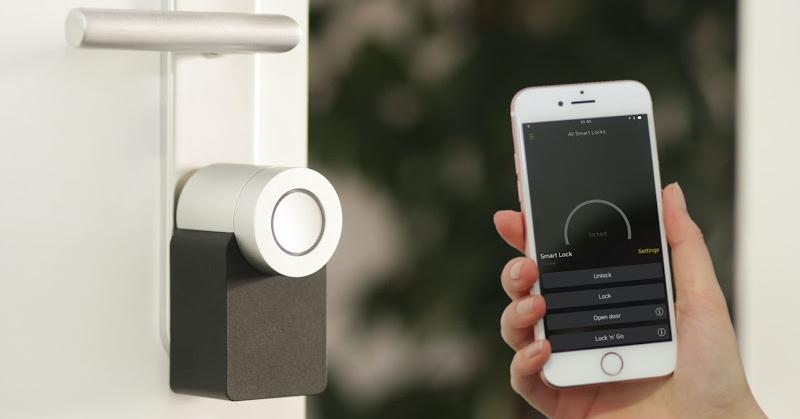A smart home is more than just a residence these days; it’s a harmonious amalgamation of cutting-edge technology and elegant design. The seamless integration of technology into interior spaces has transformed living experiences, making homes and every modern small kitchen design more comfortable, efficient, and interconnected.
The key lies in striking a balance between functional innovation and aesthetic appeal. In this article, we delve into the art of integrating technology seamlessly into interior design, exploring 7 expert tips to create truly smart homes with smart interiors.
7 Tips for Integrating Technology into Your Home
Define Your Objectives
The journey towards a smart home starts with clear objectives. As a homeowner or designer, outline your priorities. Do you aim for enhanced security, energy efficiency, or convenience?
Defining your goals helps you make informed decisions about the type and extent of technology integration needed. For instance, if energy efficiency is a prime concern, opt for smart thermostats, automated lighting systems, and energy monitoring devices. You can even connect your plumbing system to an automated system.
Identifying objectives enables a purposeful approach, ensuring that technology adds value without overwhelming the design aesthetic.
Prioritize User-Friendly Interfaces
Even if there’s no denying the draw of sophisticated technology, user-friendliness should continue to be a priority in clever interior design.
You should pick a piece of technology that fits in with your regular activities. The seamless control of many gadgets is made possible by intuitive interfaces like touchscreen panels or smartphone apps. A hands-free experience is provided by home automation systems with voice controls.
A centralized control hub that makes it simple for users to control entertainment, security, and lighting systems is an illustration of this. By placing a high priority on user-friendly interfaces, technology will help residents without frustrating them.
Harmonize Technology with Design Aesthetics
The likelihood that technology would conflict with the aesthetics of interior design is a prevalent worry when incorporating it. However, the integration can be accomplished tastefully by working with specialists in both technology and design. When possible, keep technology hidden and smoothly incorporate it into the design.
It is possible to conceal TVs behind wall decor or mirrors, and speakers can be covertly inserted into walls or ceilings. Select furniture, accessories, and appliances with modern styles that go with your decor. Smart switches and outlets, for instance, should seem like conventional ones to maintain visual coherence.
Consider Scalability and Future-Proofing
A smart interior should be ready to accept future developments because technology is developing quickly. Choose scalable and adaptive solutions while making your device selection. Purchasing an open-source home automation system enables simple future device integration.
Additionally, future expansion should be considered when designing wiring infrastructures. The distribution of Ethernet connections throughout the house enables strong connectivity, guaranteeing that the smart home is kept current and useful as technology develops.
Focus on Lighting Control
Lighting is essential to home design because it creates mood and ambience. Unparalleled versatility in modifying lighting schemes to suit various circumstances or tastes is provided by smart lighting control systems. Install dimmable LED lights with remote control to create different moods.
Include motorized curtains or shades that change dependent on the temperature, the time of day, or the amount of natural light. Any space’s visual attractiveness can be significantly increased by combining technology-driven lighting solutions with interior design components.
Integrate Smart Furniture and Appliances
Smart technology can be incorporated into appliances and furniture as well as stand-alone gadgets. Think about making an investment in technologically advanced, useful furniture.
For instance, an ottoman with concealed storage and Bluetooth speakers or a smart coffee table with integrated wireless charging pads can be both useful and creative. Similar to this, kitchen products like touchscreen refrigerators or Wi-Fi enabled ovens can simplify daily duties while giving the room a contemporary feel.
Embrace Natural Elements with Smart Landscaping
Outdoor areas are also included in smart interiors, which go beyond the confines of a building. Use technology to improve outdoor life while keeping a connection to nature. Intelligent landscaping solutions include automated irrigation systems that modify watering schedules in response to weather predictions and soil moisture levels.
Motion-activated outdoor lights can offer security while using less power. Additionally, incorporate landscape-integrated outdoor entertainment systems to provide an immersive experience for meetings and relaxation.
Conclusion
The marriage of technology and interior design has given birth to the concept of smart homes with smart interiors. This synergy elevates living spaces, enhancing convenience, aesthetics, and efficiency. By following 8 eight expert tips, homeowners and designers can strike a harmonious balance between innovation and design.
